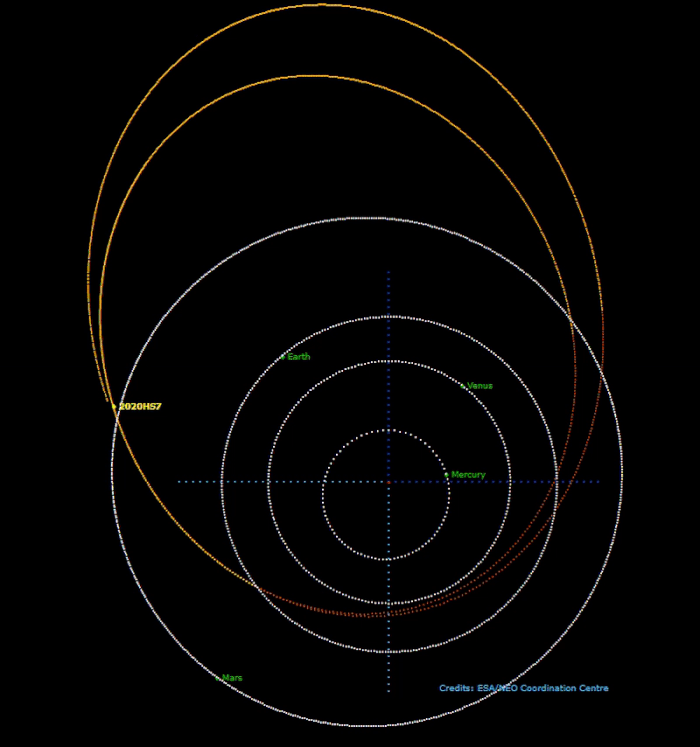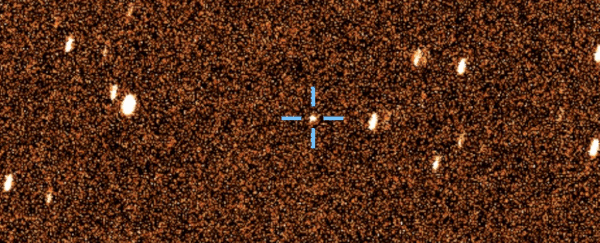With all the large asteroids hitting the news lately, it would have been easy for a small one to sneak under the radar. In fact, one very nearly did. On April 27, astronomers discovered a new asteroid, a little pixie of a space rock between 4 and 8 metres (13 to 26 feet) across.
It was already close to Earth at this point, and the probability of a collision was calculated at around 10 percent. At its size, it would have burnt up on atmospheric entry, so it posed no threat to humans anyway.
But the asteroid's trajectory would bring it very close to the geostationary ring, the volume of space around Earth in which bodies can maintain geostationary orbit. That space is packed with satellites.
On April 28, this asteroid - later named 2020 HS7 - skimmed past Earth at a distance around nine times closer than the average distance of the Moon.
At a distance of 42,735 kilometres (26,554 miles) from the centre of Earth - the Earth-Moon distance is 384,400 kilometres (238,855 miles) from centre to centre on average - 2020 HS7 pulled off one of the closest asteroid flybys we've ever seen.
And it skimmed the nearest satellite by just 1,200 kilometres (746 miles). That may sound a bit scary, but neither we nor our satellites were in any particular danger.
 (ESA/NEO Coordination Centre)
(ESA/NEO Coordination Centre)
"Small asteroids like 2020 HS7 safely pass by Earth a few times per month," said astronomer Lindley Johnson of NASA's Planetary Defense Coordination Office just prior to the flyby. "It poses no threat to our planet."
In fact, 2020 HS7 was a good thing. It allowed scientists to test their detection, observation, follow-up and prediction capabilities on a small near-Earth asteroid. And they showed they were able to predict and track the path of 2020 HS7 with incredible accuracy, even with just a day's notice.
You may have been hearing about near-Earth asteroids a lot recently. In just the last few months, we've had larger asteroids such as 2020 BX12 and 1998 OR2 (which had its close flyby just a day after 2020 HS7) swing past.
Astronomers have also just watched comet 2I/Borisov, the interstellar visitor, crumble into pieces. But although it may seem like there are more rocks than ever in our vicinity, in reality, we're just getting really, really good at spotting and tracking them.
This is great news for us, because it means we are becoming better equipped to deal with an asteroid that will pose a threat to Earth. Detection, observation and prediction are the first steps.
What comes after that is still being ironed out, but we're getting there. In 2022, space agencies around the world will be working together to ram a spacecraft into an asteroid (one that's not headed for Earth) to see if we are able to deflect its course.
If it works, we will have another brilliant tool in our kit for keeping giant rocks from raining fiery death on our planet.
